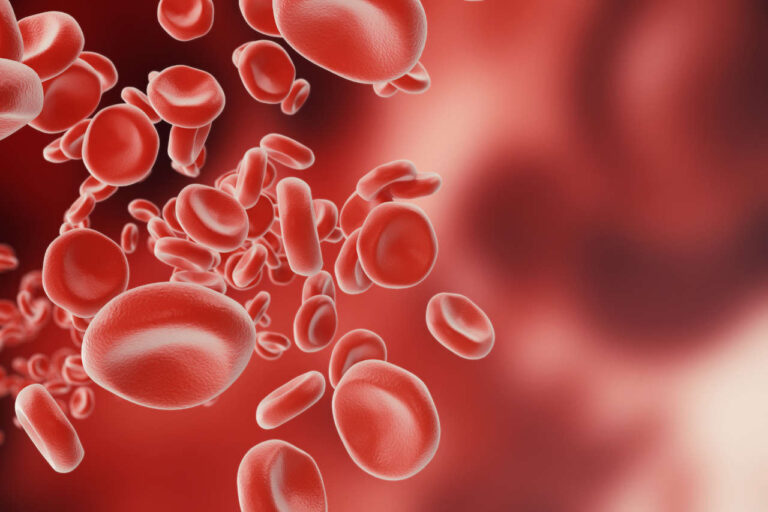
Brukinsa is an FDA-approved medication used to treat certain blood cancers in adults. Learn about its mechanism of action, side effects, cost, and more.
Speak to a Specialist About Copay Assistance
What Is Brukinsa?
Brukinsa is a brand-name prescription medication. The active substance in this product is zanubrutinib, which is a member of a class of medications called kinase inhibitors. It works by blocking an abnormal protein which signals cancer cells to divide rapidly.
The U.S. FDA has approved Brukinsa to treat certain adults with the following conditions:
Mantle cell lymphoma (MCL)
MCL is a rare, fast-growing cancer that originates in the white blood cells. Brukinsa may be prescribed for adults with MCL who have previously received at least one treatment.
Waldenström’s macroglobulinemia (WM)
This is a rare, slow-growing cancer that starts in the white blood cells called B-cells.
Marginal zone lymphoma (MZL)
MZL is a rare, slow-growing cancer that causes B-cells to divide rapidly. A provider may prescribe Brukinsa for adults with MZL if they failed to respond to previous treatment or their cancer has returned.
Chronic lymphocytic leukemia (CLL) or small lymphocytic lymphoma (SLL)
CLL and SLL are the same disease. However, in individuals with CLL, cancer cells are present mostly in their blood and bone marrow. On the other hand, cancer cells are found mostly in the lymph nodes in people with SLL.
Follicular lymphoma (FL)
This is a slow-growing cancer that starts in the B-cells. A provider may prescribe Brukinsa with another medication (usually obinutuzumab) for adults with FL if they have failed to respond to previous treatment or their cancer has returned.
When Was Brukinsa Approved?
In November 2019, the FDA approved Brukinsa to treat adults with Mantle cell lymphoma.
Two years later, the medication received FDA approval to treat Waldenström’s macroglobulinemia. The same year, the FDA granted accelerated approval for relapsed/treatment-resistant marginal zone lymphoma.
In January 2023, Brukinsa received approval for chronic lymphocytic leukemia. BeiGene (Brukinsa’s manufacturer) announced that the FDA had granted accelerated approval for relapsed/treatment-resistant follicular lymphoma.
The Accelerated Approval Program allows earlier approval for certain medications that treat serious conditions. Approval is based on the results of initial trials. The FDA may decide to grant full approval if the confirmatory trials show the drug provides a clinical benefit.
If the confirmatory trials show no benefit, the FDA may ask the drug maker to remove the drug from the market.
How To Use Brukinsa Properly
This medication is available as an oral capsule; each capsule contains 80 milligrams (mg) of the active drug.
Take the recommended dosage exactly as prescribed and at the same time each day. Do not take less, more, or for longer than prescribed. This will help maintain consistent blood drug levels.
Never stop taking this medication without talking to your provider. Continue your dosing schedule even if you feel better.
Follow instructions on the prescription label. Talk to your provider or pharmacist if you do not understand the information on the prescription label.
Swallow the entire capsule with about 8 ounces of water. Avoid opening, chewing, or crushing it.
Your provider may reduce the dose or temporarily (sometimes completely) stop treatment. Dosage adjustments are based on your response to treatment and side effects.
Get Financial Assistance
Foods To Avoid During Brukinsa Treatment
Avoid consuming Seville oranges, grapefruits, and their juices during treatment. These foods can cause the blood levels of the medication to rise and worsen the side effects.
Things to Know Before Taking Brunkinsa
Inform your provider if you have:
- Bleeding problems
- Had recent surgery or plan to have one (you may need to stop taking this medication for any scheduled medical, surgical, or dental procedure)
- An infection
- Had heart rhythm issues
- High blood pressure
- Liver problems, including previous hepatitis B
Use in Pregnancy and Lactation
Tell your provider if you are pregnant or plan to become pregnant. This medication can harm your unborn baby. Your provider may run a pregnancy test before starting treatment.
Avoid getting pregnant during treatment and for 7 days after the last dose. Use effective birth control (contraception) during treatment and for 7 days after the last dose.
Men should avoid getting their partners pregnant during treatment and for 7 days after the last dose. They should use effective birth control (contraception) during treatment and for 7 days after the last dose.
Tell your provider if you are breastfeeding or plan to breastfeed. It is unknown if this medication passes into breast milk. Avoid breastfeeding during treatment and for 14 days after the last dose.
What Are the Side Effects of Brukinsa?
Common Side Effects:
- Decreased white blood cell count
- Decreased platelet count
- Upper airway infection
- Bleeding
- Muscle, bone, or joint pain
Talk to your provider if these symptoms persist or worsen.
Serious Side Effects
Talk to your provider immediately or seek emergency medical treatment if you experience:

- Fever, sore throat, cough, chills, or other signs and symptoms of infection
- Painful, frequent, or urgent urination
- Unusual bruising or bleeding
- Blood in your stools or black, tar-like stools; pink or brown urine; vomiting or coughing up blood
- Dizziness, weakness, or confusion; changes in speech; long-lasting headache
- Fast or irregular heartbeat, palpitations, lightheadedness or dizziness, fainting, shortness of breath, chest pain
This medication may make you more likely to get other cancers, including skin cancer. Therefore, avoid unnecessary or prolonged exposure to sunlight and wear protective clothing, sunglasses, and sunscreen.
Speak to a Specialist
Typical Dosages of Brukinsa
The following dosages are commonly prescribed. Your provider will determine the dosage that best fits your requirements.
Mantle Cell Lymphoma (MCL)
160 mg (2 capsules) twice daily or 320 mg (4 capsules) once daily.
Waldenström’s Macroglobulinemia (WM)
160 mg (2 capsules) twice daily or 320 mg (4 capsules) once daily.
Marginal Zone Lymphoma (MZL)
160 mg (2 capsules) twice daily or 320 mg (4 capsules) once daily.
Follicular Lymphoma (FL)
With obinutuzumab, 160 mg (2 capsules) twice daily or 320 mg (4 capsules) once daily.
Chronic Lymphocytic Leukemia or Small Lymphocytic Lymphoma
160 mg (2 capsules) twice daily or 320 mg (4 capsules) once daily.
Treatment continues until your condition worsens or you experience severe side effects.
How Much Does Brukinsa Cost?
The amount you pay for Brukinsa treatment can vary, depending on your insurance plan, geographical location, and pharmacy. Contact your insurance provider to learn if your plan covers this medicine or if you need prior authorization.
You can find information about insurance coverage, out-of-pocket costs, and co-pay support in the myBeiGene patient support program.
Brukinsa: Frequently Asked Questions
Is Brukinsa a type of chemo?
Brukinsa is not a type of chemotherapy treatment; rather, it is a targeted treatment.
Is Brukinsa expensive?
The cost of 120 oral capsules (80 mg) is about $15,874.
Is Brukinsa better than Imbruvica?
In the Phase III ALPINE trial, individuals receiving Brukinsa had a 35% lower risk of disease progression or death than those on Imbruvica [1].
Brukinsa was more effective than Imbruvica for progression-free survival in previously treated individuals with relapsed/treatment-resistant chronic lymphocytic leukemia.
REFERENCES:
1. Manalac, T. (2022, December 14). BeiGene’s Brukinsa outshines Janssen’s Imbruvica in comparison trial. BioSpace. https://www.biospace.com/article/beigene-s-brukinsa-outshines-janssen-s-imbruvica-in-comparison-trial-/.













